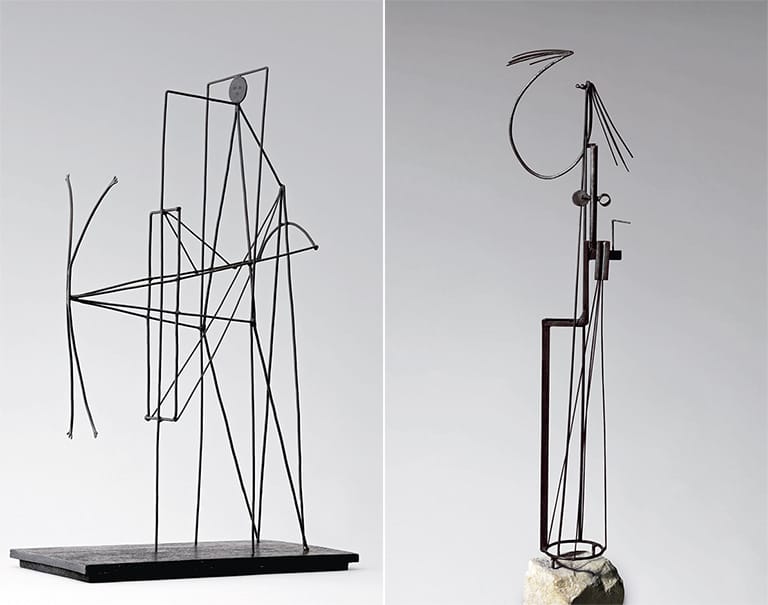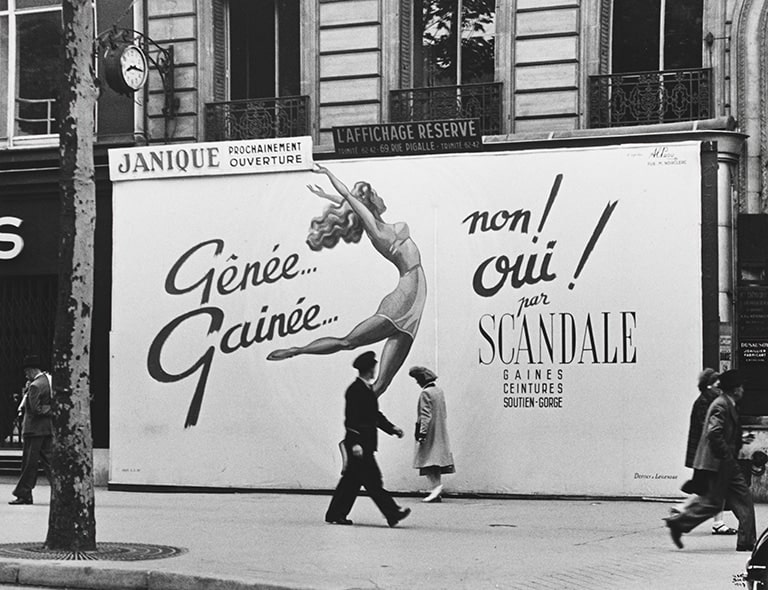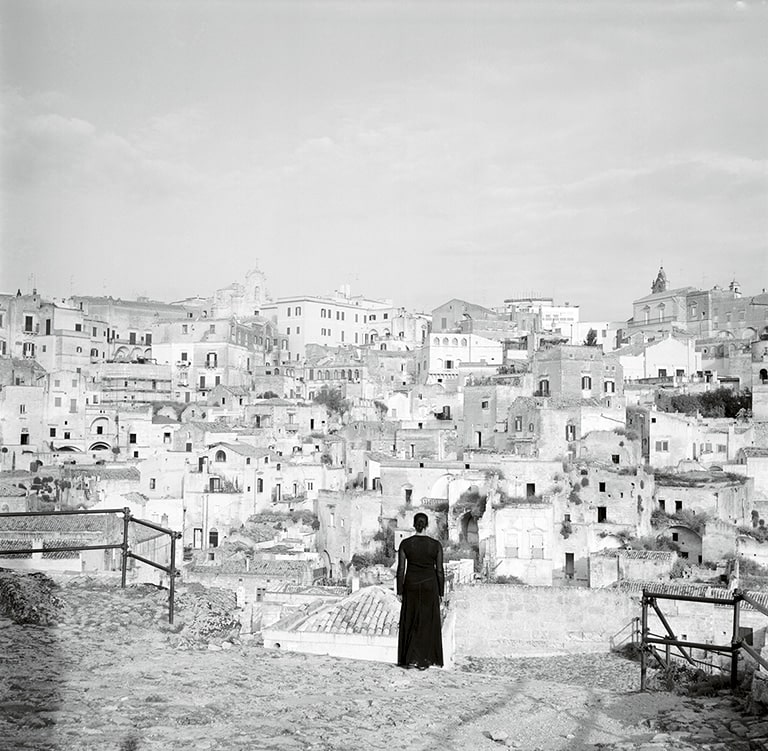Apuntes de figuras femeninas

Rafael de Penagos
Apuntes de figuras femeninas, 1939-1942
© Rafael de Penagos. Fundación MAPFRE COLLECTIONS, Madrid, 2021
Technique
Ink, tempera and gouache on paper
Dimensions
Dimensions of printed area: 10,5 x 8,4 cm (4 1/8 x 3 5/16 in.)
Inventory
FM001894
Material / Format
Paper
Description
Penagos was the great creator of Art-Deco illustration in Spain and, in addition to his important aesthetic innovations in the field of graphic illustration, we must highlight as a fundamental contribution, the fact that he created a new type of woman -the so-called “Penagos woman”- marked by extreme modernity and sophistication in her way of dressing, and in her ways and manners of behaving.
We are in the 1920s and 1930s, Spain manifests a deep need for modernity to which, however, ordinary people do not have access. Illustrated magazines became the great means of mass communication, and through their illustrations they provided a dream of social renewal that, little by little, would gradually filter into the different strata of society. Artists were in charge of “filtering” this “dose” of modernity and popularizing and making the most innovative artistic trends understandable.
The illustrations by Rafael de Penagos show the image of the new feminine archetype that emerged in these years of the twentieth century. Makeup, fashion, new forms of leisure, sports, the beach, the new eroticism or advertising are some of the aspects that starred in these drawings. They are the women who, amidst the heroism and the carefree attitude of the time, broke with all kinds of traditions. The role of Penagos is important, who, from the modest pages of a magazine and thanks to his effort and talent, imposed a brighter, more modern and more international image of a Spain that, in many aspects, still remained anchored in nineteenth-century stereotypes.
In 1989, the Fundación Cultural MAPFRE VIDA acquired the most important existing collection of Rafael de Penagos.
It consists of 246 works, of which 186 are watercolors, gouaches, pastels, oil paintings and drawings in pencil, charcoal or Indian ink. Most of these works are originals for graphic illustrations, posters or advertisements. They are works of very different formats, with an abundance of small drawings that need to be grouped to be exhibited.
The collection is completed with two brass plates with MAPFRE advertisements, with a significant set of first editions of his drawings published in different magazines and with abundant documentation donated by the artist’s son, including his doctoral thesis on perspective.
Rafael de Penagos (1889-1954) was the creator in Spain of Art Deco illustration, the style that marks the incorporation of the languages of modernity in everyday life. The Art Deco illustrations created by Penagos represented a new urban and modern society that often did not correspond to the reality in Spain. They starred a new, active, sporty, free and unprejudiced woman – the so-called “modern Eva” – who represented a new stereotype to which Spanish women were beginning to aspire. Large-circulation magazines, such as Blanco y Negro, Nuevo Mundo or La Esfera, and important collections of pseudo-erotic novels (with print runs that sometimes reached 400,000 copies) collected and disseminated these new stereotypes in their pages.
Technique
Gelatin silver print
Measurements
Measurements of printed area: 21,8 x 32,8 cm (8 9/16 x 12 15/16 in.)
Inventory
FM000612
Objective / Document
Vintage print
Description
Winogrand investigated. He was not interested in photographs that he could recognize, he needed to find «the others». Legend has it that he would go out onto the streets every day with his Leica, a wide-angle lens, and ten rolls of Tri-X. He would return home with New York in his pockets. His particular frame (skewed, offering an alternative axis to the horizontal) and his command of the wide-angle lens means that the compositions of his photographs are highly precise, where every secondary character and every shadow has a meaning and is aligned with a particular purpose. Photographs are taken quickly, but rarely by chance. Nothing is frivolous in Winogrand’s work but there is also nothing erudite. Everything contains its exact meaning. The photographs are not discursive, they are about the form, the moment and the instant. Filling the frame with a dose of reality and taking the shot. Developing the film. Obtaining the positives. Looking at the contacts; printing them. This is the complete Winogrand journey, which he began every morning with his Leica and his pockets stuffed with blank film, the streets at his feet.
Dallas, Texas
Diamonstein, Barbara. “An Interview with Garry Winogrand”, en Visions and Images: American photographers on photography. Nueva York, Rizoli, 1981, pp. 179-191
Lyons, Nathan y Bruce Davidson. Towards a Social Landscape. Nueva York: Horizon Press for the George Eastman House, 1966
Papageorge, Tod y Garry Winogrand. Garry Winogrand: Public Relations. Nueva York: The Museum of Modern Art, Nueva York 1977
Szarkowski, John. The Photographer’s Eye. Nueva York: Museum of Modern Art, 1966
Szarkowski, John. Mirrors and Windows: American Photography Since 1960. Nueva York: Museum of Modern Art, 1978
Winogrand, Garry, Carlos Gollonet, Gregorio Molina, Juan Santana Lario. Garry Winogrand: el juego de la fotografía = the game of photography. Madrid: TF. Editores, 2001
Winogrand, Garry. The Animals. Nueva York: Museum of Modern Art, 2004. (1ªed. 1969)
Winogrand, Garry, Helen Gary Bishop. Women Are Beautiful. Nueva York: Farrar, Straus & Giroux, 1975
Winogrand, Garry, John Szarkowski. Winogrand: Figments from the Real World. Springs Industries series on the art of photography. New York: Museum of Modern Art, 1988
Winogrand, Garry. Stock Photographs: The Fort Worth Fat Stock Show and Rodeo. Austin: University of Texas Press, 1980
Winogrand, Garry, Ben Lifson, Jeffrey Fraenkel. The Man in the Crowd: The Uneasy Streets of Garry Winogrand. San Francisco: Fraenkel Gallery con D.A.P. 1999




